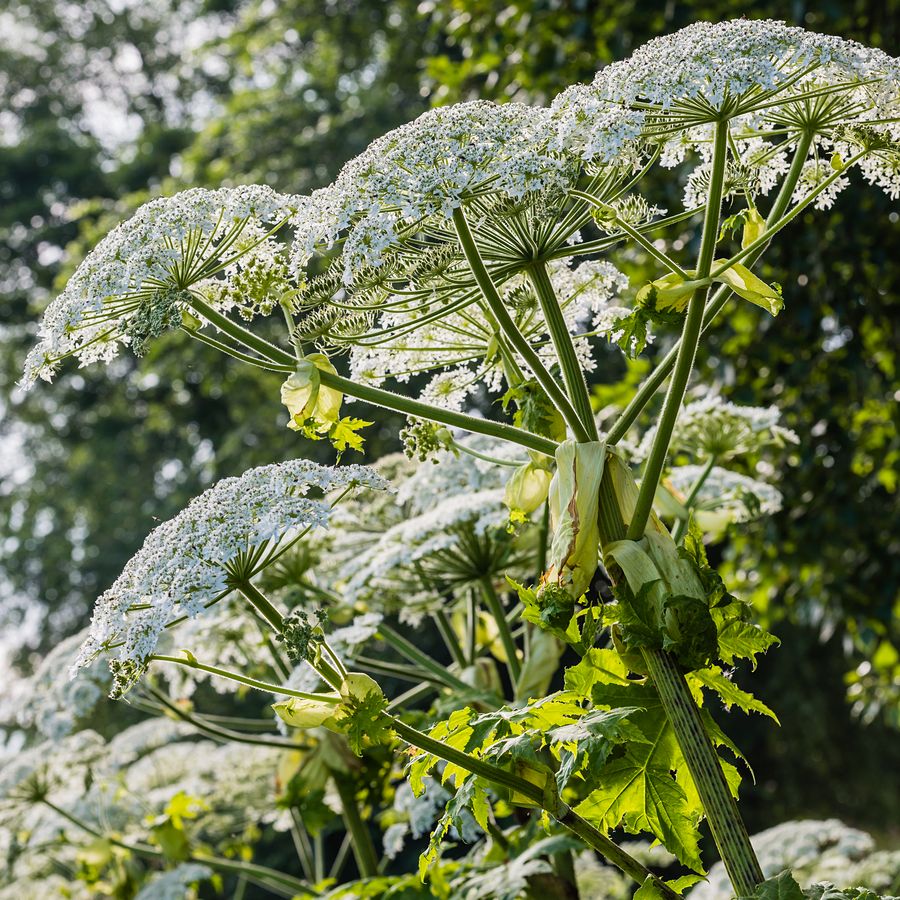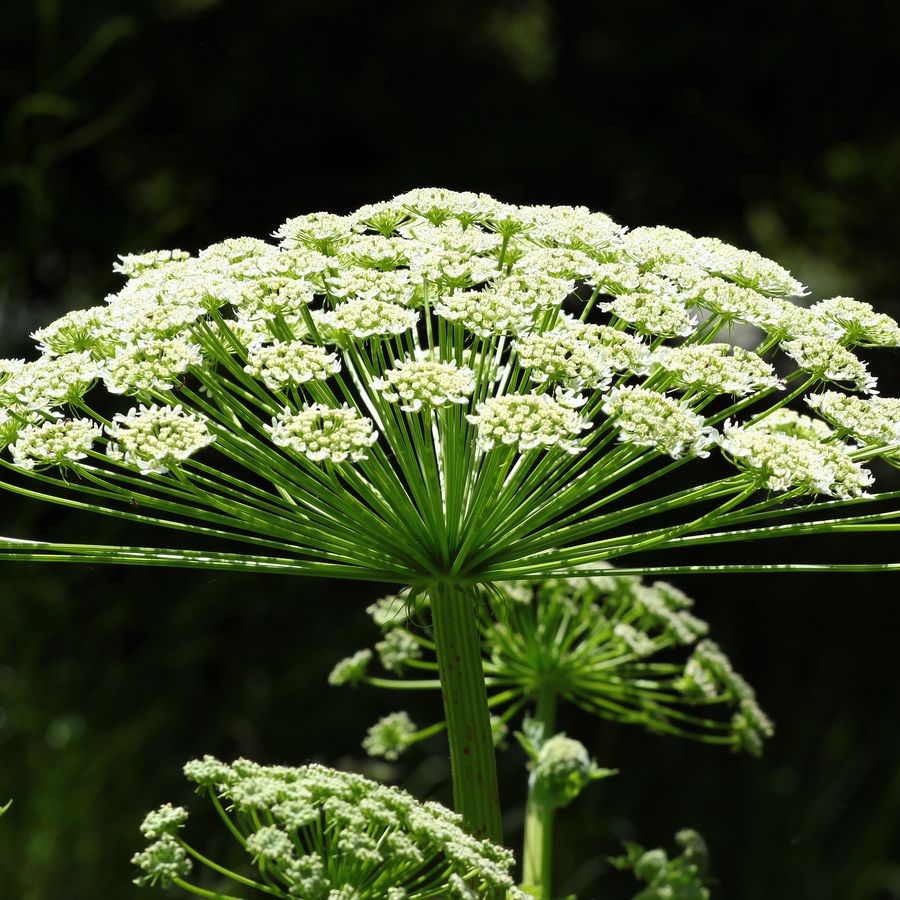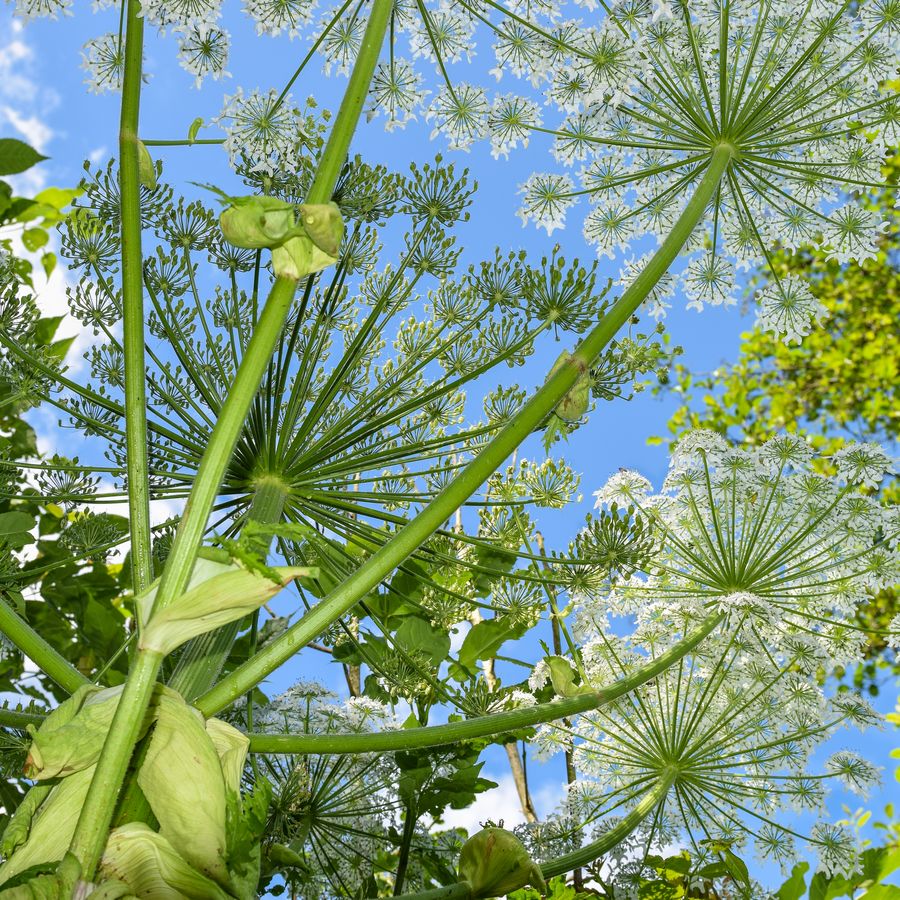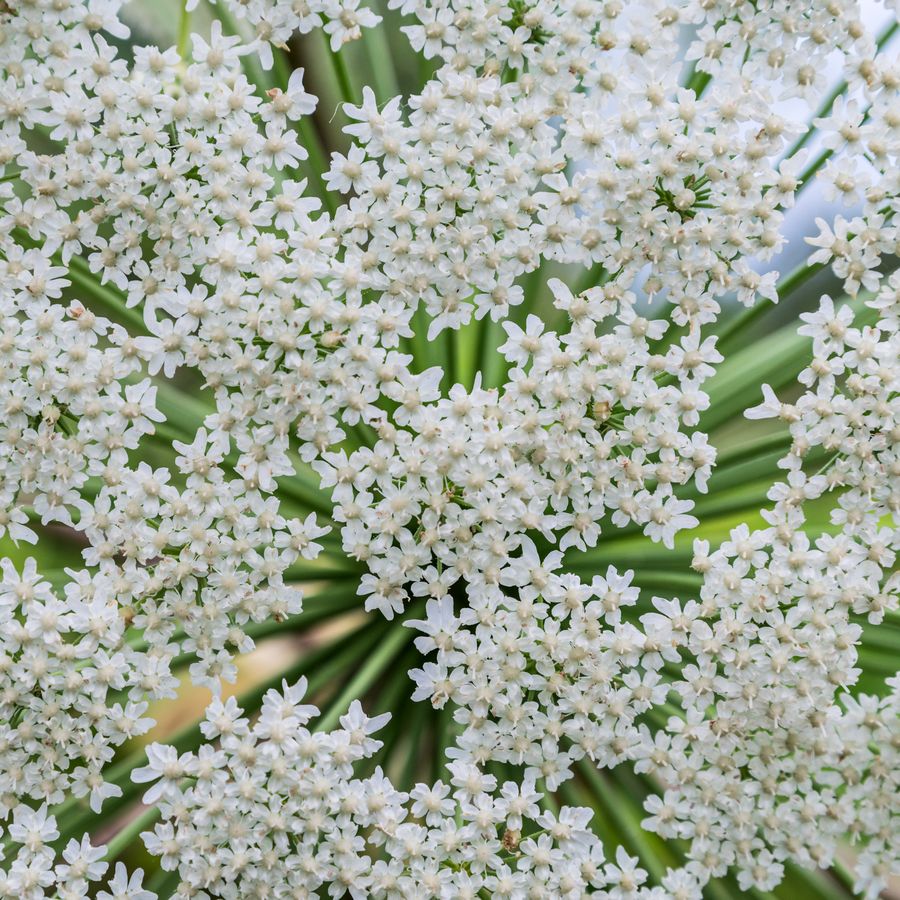Giant Hogweed Control & Removal
At Kustom Landscapes & Ecology, we specialise in Giant Hogweed control and removal in Dorset, Hampshire, Wiltshire, Bristol & Bath, Gloucestershire, Somerset and Devon, along with a range of other invasive plants.
Giant Hogweed originates from the Caucasus Mountains of North Western Asia. It has, like all Invasive Non Native species (INNS), a ‘particular set of skills’ that makes it a dangerous nightmare. Giant Hogweed is established in all the varied landscapes of the South and South west of England, including dense urban areas such as Bristol, Bath, Exeter and Southampton, and coastal and rural areas of Dorset, Devon and Hampshire.
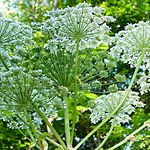 Above ground Giant Hogweed
Above ground Giant Hogweed
Vigorous growth. Large, Jagged and serrated leaves that can grow up to 3 m in spread. Hollow, singular, bristly stems dappled with purple markings that can grow between 1.5m and 5m if left unabated. Flowers take on appearance of umbrellas of white-pink florets which will mature to produce up to 20,000 seeds per plant. It can retain these seeds until optimum conditions before release. The larger Giant Hogweed grows, the more seeds it will produce. Seeds will carry in wind and through water. Giant Hogweed has the potential to self-pollinate.
Below Ground Giant Hogweed
Giant Hogweed will produce a large tap root extending down to up to 0.6m with finer fibrous roots connected The crown will remain below ground.
Giant Hogweed Sap
As well as being able to dominate in its size and ability to multiply, Giant Hogweed has an effective defense mechanism against insect predators that has proven to be highly dangerous to humans. Cut or damaged Giant Hogweed leaves and stems will omit sap that in the event of contact with human skin, will react with sunlight causing terrible blistering and then corrosive like burns. Contact from the sap will not immediately cause symptoms so may remain on skin for some time before it is noticed and dispersed. It is chemicals in the sap called furanocoumarins which act in creating extreme sunlight sensitivity to effected skin. The Giant Hogweed furanocoumarins react with UV sunlight to disrupt DNA cellular information and activity, causing cells to die off as key DNA connections are broken beyond repair. The Cellular trauma causes blistering to protect the area as skin cells die and depending on the amount of contact can be extensive. If contact is made with eyes then the potential for blindness is very real.
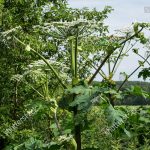
Giant Hogweed is classified as an invasive non-native species (INNS): http://www.nonnativespecies.org
Giant Hogweed or heralcleum mantegazzium as it scientifically known comes under this classification for these reasons:
- Growth rate and size – outcompetes native flora
- Different reproductive cycles and methods – can produce up to 20,000 seeds per plant.
- Can self-pollinate
- Resistant to natural predators and pests – no native insects actively control plant quantities
- Will cause extreme burns to skin contact
In the UK, Giant Hogweed has acute adverse impacts to biodiversity.
The presence of Giant Hogweed effects the surrounding environment greatly by what is known as habitat modification:
- Early germination means that Giant hogweed can establish faster than other flora in the growing season
- Dense tall growth obscures light to smaller native plants and shrubs which produce flowers and fruit = denies food sources and pollination = reduced insect levels = reduction of small mammals, birds and amphibians’ food sources. Insects in particular will identify Giant hogweed as toxic and avoid the locality
- Large outbreaks of Giant Hogweed can obstruct and divert natural mammal pathways due to the density of large foliage and burn inducing sap once exposed to sunlight, bringing them closer to roads and other man-made hazards
- Dense growth can degrade and erode river bank stability or clog waterways contributing to flooding which will alter what flora and fauna (plants, insects, amphibians and mammals) can survive in the locality
Giant Hogweed was first recorded as a seed stock at Kew gardens in England in 1817 likely classed as an ornamental. The first naturalised emergence was recorded in 1828 in Cambridgeshire and from then on spread rapidly especially along water ways. In Eastern Europe and Russia as late as the 1940’s it was used agriculturally as fodder for winter feed. Due to the sap needing to be exposed to sunlight, it did not seem to cause harm to farm animals that ingested it but was phased out due to it effecting the taste of milk and meat with an aniseed flavour.
The invasiveness and negative effect on biodiversity of Giant Hogweed is undeniable but it is also the potential for injury to humans that is also a drive for the need for removal, control and eradication. Giant hogweeds’ proximity to areas of social interest such as areas of natural beauty, hedgerows and waterways mean that humans are increasingly coming into contact with Giant Hogweed and it is a worrying fact that it is children that can be most at risk, this is due primarily to an understandable lack of education where the risk lies and a rightly natural explorative nature.
Eruptions in areas of social use mean a necessity to prevent contact with Giant Hogweed which can result in closure of access, meaning potential loss of footfall and earnings to localised areas of tourism. Residential and commercials developers must put in place measures for the removal, control and eradication of Giant Hogweed if present on site which may mean that works cannot be undertaken or completed until the management plan is complete.
How can we help you?
What does a Giant Hogweed Survey consist of?
A request to survey will entail liaising onsite with a surveyor. Regardless if you know exactly where the Giant Hogweed is on the property or land, or you have difficulty identifying it, the first contact and chat with you is incredibly useful as you can provide a great deal of historical and geographical information.
A thorough walk through of the site will reveal any evidence of Giant Hogweed, even in the winter time there are always indicators. We would also be looking for clues and information as to how Giant Hogweed arrived at the location in the first place and how to prevent it from contaminating the rest of the property or land, this is known as biosecurity. The site will then be measured, and any Giant Hogweed plotted It will also be established as to any Giant Hogweed in neighboring properties or land. The information will be presented in a survey report in which a site plan will be generated, and additional research will have been obtained to clarify any evidence e.g. land registry or aerial maps
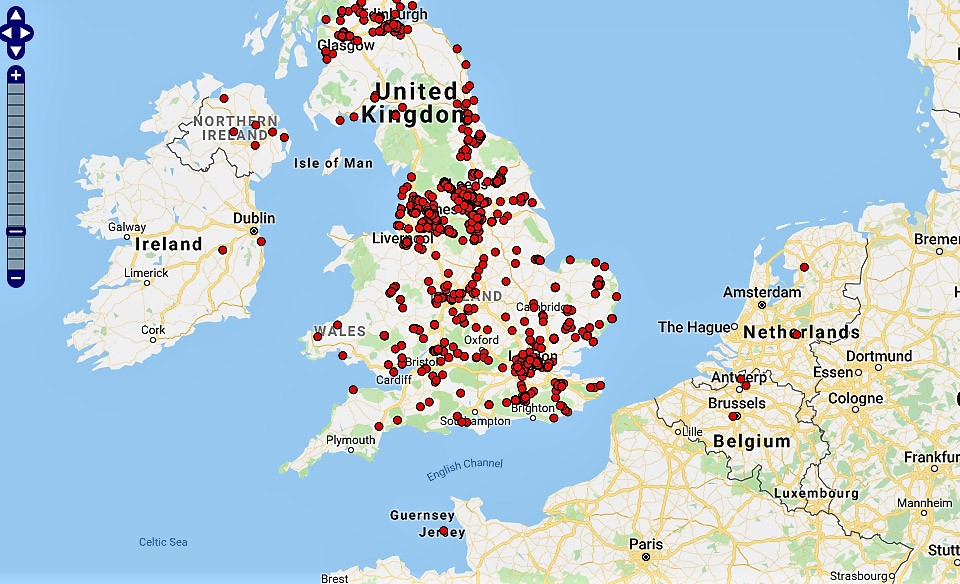
I have looked at your website and I’m sure that I have Giant Hogweed am I breaking the law by having it on my property?
It is not illegal for you to have Giant Hogweed on your property, but it is your responsibility take on the role of remediating the problem.
Ignoring the problem will affect not just your property and its localised environment, but your neighbours properties and any others natural areas such as park land, water ways and areas of social or special interest. Failure to acknowledge your responsibility could bring you to the attention of local authorities and the police who have the power to issue Community Protection Notices:
https://www.gov.uk/guidance/prevent-the-spread-of-harmful-invasive-and-non-native-plants
Removing material from site that contains Giant hogweed must be classified as controlled waste. It is illegal to dispose of controlled waste in the incorrect manner without registering to do so and certainly disposing of Giant Hogweed controlled waste improperly can result in prosecution.
How do I tackle the problem? Can I do it myself?
There is no legal obstruction for you to undertake remediating the Giant Hogweed on your property but Giant hogweed on your property can affect other properties, land and waterways close to you. The potential to release 20,000 seeds per plant and dangerous burn inducing sap requires a specialist management plan and trained operatives to effectively deal with the problem
What is entailed in the control and eradication of Giant Hogweed?
One of the most vital aspects of the control and eradication of Giant Hogweed is the prevention of viable seeds.
The sheer quantity produced and the ease at which they can spread via wind, water and other vectors means that the seed heads need to either be removed before viable seeds or the plants prevented from producing seed by complete Giant Hogweed Removal or herbicide application by knapsack sprayer or stem injection.
Revegetation should always be a consideration once a management plan is in the completion phase. This is a crucial opportunity to reinstate biodiversity after an invasive attack and can also be an effective way to prevent other INNS from exploiting a vulnerable location.
What type of herbicides do you use? Are they harmful to humans and animals?
We use a glyphosate-based herbicide which can only be obtained under license and must pass through stringent health and safety testing.
There are no restrictions as regards to exclusion from the area for humans or animals after application. Glyphosate is a systemic, non selective herbicide which only targets and inhibits certain enzymes in Plants, vital for protein conversion, growth and cell integrity
All our operatives must have passed a specific examination in the safe use of pesticides and herbicides before handling and applying to Giant Hogweed or any other INNS.
In the event that Giant Hogweed is close to water courses or ditches, application for consent will be made to the environment agency. Glyphosate is one of the very few herbicides that will be considered in use around water.
Glyphosate is also non residual meaning that it will dissipate on contact with soils and will not remain or contaminate. We follow closely, current legislation and would never actively use a product that put yourself, ourselves or animals at risk.
What areas of the UK do you cover?
Our invasive plants control and removal services cover the following counties: Dorset, Hampshire, Wiltshire, Bristol & Bath, Gloucestershire, Somerset and Devon.

